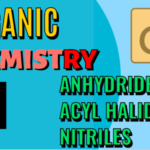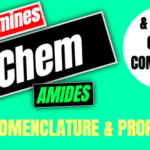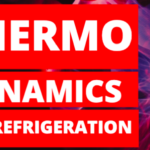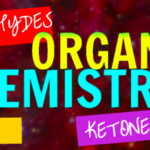Category: Uncategorized
-
Flow in Noncircular Ducts
In today’s lesson, we will discuss the following topics 1. Changes in Calculations: Noncircular Ducts 2. Flow Between Parallel Plates 3. Flow Between Parallel Plates – Laminar Flow Solution 4. Flow Between Parallel Plates – Turbulent Flow Solution 5. Example – Find Head Loss and Pressure Drop 6. Concentric Annulus Flow 7. Example – Find…
https://www.circologhislandi.net/en/conferenze/ Read more...
-
Nondimensionalization and Scaling of the Basic Equations
In today’s lesson, we will be discussing the following topics: 1. Nondimensionalization and scaling of the Continuity Equation 2 Nondimensionalization and scaling of the Navier-Stokes Equation video coming soon If you haven’t read the background on nondimensionalization, check out this previous post here. We are going to be converting the Navier-Stokes and Continuity equations into…
-

Putting it All Together – Trickier Examples
In today’s lesson, we will use what we previously learned in this chapter to put together names and drawings of trickier organic compounds. Here’s what we learned so far (if you are not up to date with all of these, please check out the previous blog posts before heading to this one): (a) Drawing Skeletal…
-

Nomenclature and Properties of Anhydrides, Acyl Halides (eg. Acid Chloride), Nitrile
In today’s lesson, we are going to discuss nomenclature and properties of the following organic functional groups: 1. Anhydrides 2. Acyl Halides (eg. Acid Chlorides) 3. Nitriles Anhydrides Note: “Anhydrides” and “Acid Anhydrides” are different names for the same family. Anhydrides are compounds that have 2 carbonyl groups separated by an Oxygen in the shape.…
-

Nomenclature and Properties of Amines, Amides, and Heterocyclic Compounds
In today’s lesson, we are going to discuss nomenclature and properties of the following organic functional groups: 1. Amines Nomenclature 2. Amides Nomenclature 3. Heterocyclic Compound Nomenclature 4. Amine Properties 5. Amide Properties Amines Nomenclature Amines are a functional group that contains a nitrogen with a lone pair of electrons (which are always there, but…
-

Nomenclature and Properties of Carboxylic Acids, Alcohols, Thiols, Ethers, Thioethers, Esters
In today’s lesson, we are going to discuss nomenclature and properties of the following organic functional groups: 1. Carboxylic Acids 2. Alcohols 3. Thiols (Sulfur Alcohols) 4. Ethers 5. Thioethers 6. Esters Carboxylic Acids Carboxylic acids are a carboxyl group in their shape. I have highlighted the carboxyl group below: When we name these, we…
-

Gas Refrigeration (aka Reverse Brayton/Bell Coleman/Reverse Joule) Cycle + Regenerative Cooling
In today’s lesson, we are going to discuss the following topics: 1. Gas Refrigeration Cycle, otherwise known as the Reverse Brayton, Reverse Joule, or Bell Coleman Cycle 2. Equations 3. T-S Diagrams 4. Refrigeration Example 5. Regenerative Cooling VIDEO COMING SOON Notes and Assumptions: (a) This whole process is internally reversible. (b) There is no…
-

Introduction to Refrigeration Cycles
Today we are going to discuss refrigeration cycles! VIDEO COMING SOON What is the refrigeration cycle? The term refrigerate means to cool something down (to remove heat from something). By the second law of thermodynamics (which states that total entropy, or disorder, of an isolated system can never decrease over time), heat travels from areas…
-

Further Nomenclature Rules
Now that we’ve covered basic substituents and alkane, alkene, and alkyne families in the previous posts, we will put it all together. Further functional families, such as ethers, carboxylic acids, amides and more, will be discussed in their own blog post. I haven’t introduced them yet to keep it simple, but they will mostly follow…
-

Nomenclature and Properties of Aldehydes, Ketones, and Related Compounds
Today we will be discussing the following topics: 1. Nomenclature of Aldehydes and Dialdehydes 2. Properties of Aldehydes 3. Nomenclature of Ketones, Diketones and Cyclic Ketones 4. Properties of Ketones 5. Nomenclature of Ketenes 6. Properties of Ketenes Nomenclature of Aldehydes Aldehydes are organic compounds that have a carbonyl group (carbon double bonded to oxygen)…
Recent Posts
- More Practice – Thermodynamics
- More Practice – Advanced Functions
- How Genetic Algorithms Evolved From the Theory of Evolution

- More Practice – Process Design
- More Practice – Process Integration
Tags
absorption acid alcohol alphabetical order benzene calculus carbon chemical chemistry computing conjugate cyclo definite differential engineer engineering equations exceptions exponential factoring families Gaussian Elimination graphs identity indefinite limit rules limits logarithmic math MATLAB nomenclature organic phenyl programming properties reversed carnot Row Reductions rules squeeze theorem substituents System of Equations table of values trig university vapor compression
Comments
Hello there. I discovered your site by means of Google at the same time as searching for a similar subject,…
thanks!